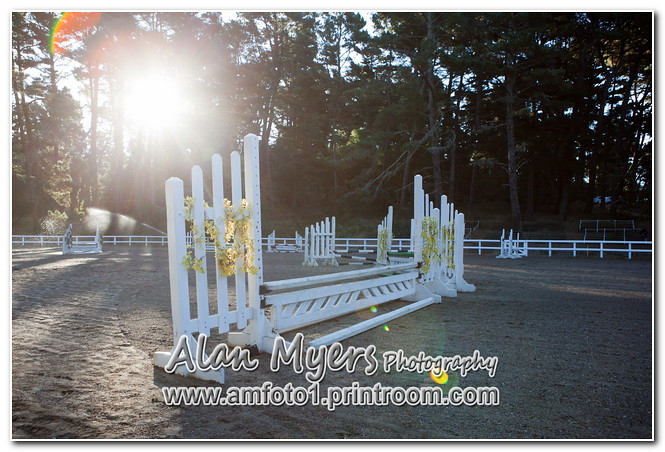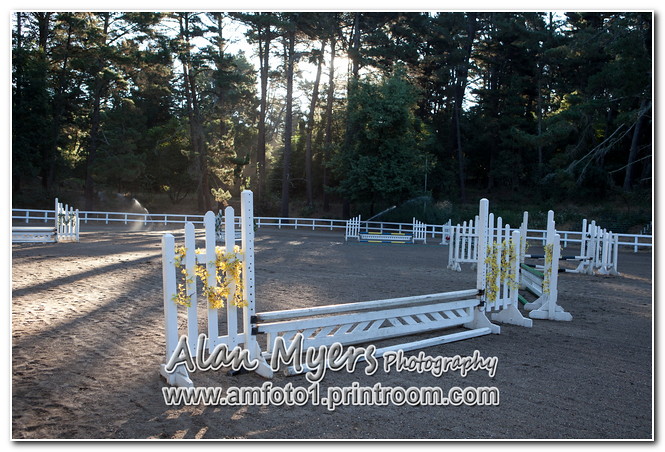Check out Underwater Photography Forum section of our forum.
Sun flare- Blue hour shoot
Jun 15, 2018 08:55:06 #
CWW
Loc: North Jersey
SharpShooter wrote:
Yes, don’t shoot straight at the sun. Shoot at a slight angle, just enough to keep the light from bouncing back and forth on the elements.
Experiment to see just how much angle it takes so you get the ball but not the flare. Good luck
SS
Experiment to see just how much angle it takes so you get the ball but not the flare. Good luck
SS
Thank you, much appreciated!
Jun 15, 2018 08:56:01 #
CWW
Loc: North Jersey
Larz wrote:
I've had good luck simply by changing the focal point to the extreme left or right. (Which I suppose is the long winded way of saying change the angle).
Thank you, much appreciated!
Jun 15, 2018 09:28:51 #
When shooting directly into the sun there is always flair and, as others have said, no filter will help that. One approach is to move your shooting location around and determine where there is less flair. Another approach is to hold a hat over the end of the lens area directly in front of the flair, as identified by looking into the camera, and then, using a remote, take the shot, but be sure the hat is out of the lens range by holding it well above the lens (sometimes this can work without having to use a remote). Another approach is to, after ensuring you are getting the least possible flair, remove the flair in Photoshop or Affinity or Luminar using remove or clone tools.
Check out Traditional Street and Architectural Photography section of our forum.
Jun 15, 2018 10:19:22 #
amfoto1
Loc: San Jose, Calif. USA
CWW wrote:
Greetings, As a learning photographer, I like taking blue hour beach photo's. Mainly silhouettes with the low sun in the back ground. The photo's so far have turned out pretty good...exact for the sun flare. Here's my gear:
Sony A7711
16-50 f2
In camera program setting Sunrise/Sunset
UV filter
Is there a process to eliminate sun flare ie, reposition to a different angle, ND filter? Any advice is appreciated...Thanks!
Sony A7711
16-50 f2
In camera program setting Sunrise/Sunset
UV filter
Is there a process to eliminate sun flare ie, reposition to a different angle, ND filter? Any advice is appreciated...Thanks!
No... REMOVE ALL FILTERS.
Shooting directly at the sun, ANY filter on the lens will almost certainly increase flare. The worst will be uncoated filters like optical plastic graduated neutral density and multi-layer filters like circular polarizers (a polarizer would have no effect anyway, shooting directly at the sun).
Experiment with different lens apertures.... in particular try smaller such as f/8, f/11. With a zoom like yours, also try different focal lengths. Different lenses will give different results... I'm not familiar with the one you're using or your alternatives, but there may be others that do better. In general, prime lenses (instead of zooms) with modest apertures (f/4, f/5.6) and the simplest optical formulas have the best potential to keep flare to a minimum. The lens aperture design and number of blades also has a significant effect.
Also try multiple exposures.... underexposure for the sun, then make a second exposure for everything else... then combine the two images in post-processing.
Be certain your lens and camera sensor are sparkling clean!
Changing position slightly sometimes makes a significant difference too.


You probably will never completely remove all sun flare when the sky is clear. But also look for partial overcast, haze, etc. that can naturally "hold back" the sun. Waiting until the sun is very low on the horizon and being seen through much more atmosphere than midday also may help (and it tends to magnify the disk of the sun, too).
Jun 15, 2018 10:23:46 #
amfoto1 wrote:
No... REMOVE ALL FILTERS. br br Shooting directly... (show quote)
Good advice and good editing.
Jun 15, 2018 12:55:02 #
rjaywallace wrote:
The idea of using a quality ND filter is not a bad one.
ND is only neutral density and has much not to do with this problem a sun shade on the lens is more helpful. I fa lens shade on the lens is not enough you can use a large black card held at the right place, you have to find the right place by seeing the shot in the view finder and making adjustments. All pro's use this method when a lens shade is not usable. The assistant holds the card while the photographer tells him where to place it and hold it. I think I last time I needed one we called it a scrim. Blocking reflections found in the lens is a different beast. Since we did not view the shot the OP made it is hard to say more. Only thing an ND filter is good for is adjusting the exposure to a better exposure and you can do the same thing by lowering your ISO number and not shooting auto ISO. Auto ISO usually chooses the highest ISO for your shot. In low it will choose the highest setting you have and add noise to your shots. The ND while in auto ISO will cause the camera again to choose a higher ISO than you actually need for the shot and that auto pick could add noise to the shot by auto picking a higher ISO. Unless needed an ND filter is useless. ND is used to cut back on light coming into a lens. You should use ISO and shutter speed and aperture before you think of using an ND filter. Why put more glass in front of the lens than you need? When a lens hood will work fine. I have a lens hood for each of my lenses. Used them a lot with backlit wedding shots out in the sun. The right angle and a lens hood made the shot since film picked the ISO while I picked the other two parts of the exposure triangle. Had I not been able use the films actual speed I would have then needed (because ISO was a constant number in film days) ND to lower the ISO number.
Jun 15, 2018 12:57:54 #
amfoto1 wrote:
No... REMOVE ALL FILTERS. br br Shooting directly... (show quote)


A lot of work in post. In film days we did it by sandwiching negatives. Sometimes by multiple exposures in camera.
Jun 15, 2018 13:02:15 #
bpulv
Loc: Buena Park, CA
CWW wrote:
Greetings, As a learning photographer, I like taking blue hour beach photo's. Mainly silhouettes with the low sun in the back ground. The photo's so far have turned out pretty good...exact for the sun flare. Here's my gear:
Sony A7711
16-50 f2
In camera program setting Sunrise/Sunset
UV filter
Is there a process to eliminate sun flare ie, reposition to a different angle, ND filter? Any advice is appreciated...Thanks!
Sony A7711
16-50 f2
In camera program setting Sunrise/Sunset
UV filter
Is there a process to eliminate sun flare ie, reposition to a different angle, ND filter? Any advice is appreciated...Thanks!
The idea of ND or graduated #10 ND filter could work, but I would do the following instead although you will have a learning curve. Shoot in RAW instead of JPG and have your camera on a tripod. You will make a series of three different exposures and combine them in Photoshop. Set your camera to manual exposure and the ISO to 100. Make the first exposure one f-stop lower then the camera's meter reading on the sky (sun not in the metered area). Make a second exposure three stops below the meter reading. Make the third exposure around eight to ten stops below the meter reading. That is to get detail in the sun without flare.
Now import all three exposures into Photoshop. Click on the left picture tab near the top of the screen. Then, highlight all three picture tabs by holding down the "Shift" key and clicking on the right picture tab. All three picture tabs should be highlighted. Click on the "Edit" pull-down menu and then "Transform" followed by "HDR" and wait. The HDR (High Dynamic Range) function will combine the most useful information from the three files into a new single photograph with the file name followed by "-HDR". Use Photoshop to adjust that photo as necessary to produce a picture were everything is properly reproduced without sun flare and brilliant colors. Finally, "Save" the .PSD file (that is a uncompressed file that contains all the picture information) and then "Save As", click on "JPG" in the pull-down menu on the bottom of the pop-up and safe the .jpg file.
Jun 15, 2018 19:00:10 #
CWW
Loc: North Jersey
rjaywallace wrote:
The idea of using a quality ND filter is not a bad one.
Thank you for responding. Much appreciated.
Jun 15, 2018 19:01:04 #
CWW
Loc: North Jersey
bpulv wrote:
The idea of ND or graduated #10 ND filter could wo... (show quote)
Thank you for your reply and advice. Much appreciated.
Jun 15, 2018 19:01:37 #
CWW
Loc: North Jersey
drklrd wrote:

A lot of work in post. In film days we did it by sandwiching negatives. Sometimes by multiple exposures in camera.


A lot of work in post. In film days we did it by sandwiching negatives. Sometimes by multiple exposures in camera.
Thanks for your reply.
Check out The Pampered Pets Corner section of our forum.
Jun 15, 2018 19:04:52 #
CWW
Loc: North Jersey
drklrd wrote:
ND is only neutral density and has much not to do ... (show quote)
Thanks for your response and advice, much appreciated.
Jun 15, 2018 19:06:30 #
Jun 15, 2018 19:07:49 #
CWW
Loc: North Jersey
amfoto1 wrote:
No... REMOVE ALL FILTERS. br br Shooting directly... (show quote)
Thanks for your response. Much appreciated.
Jun 15, 2018 19:08:34 #
CWW
Loc: North Jersey
bpulv wrote:
The idea of ND or graduated #10 ND filter could wo... (show quote)
Thanks for your response. Much appreciated.
If you want to reply, then register here. Registration is free and your account is created instantly, so you can post right away.
Check out Astronomical Photography Forum section of our forum.

